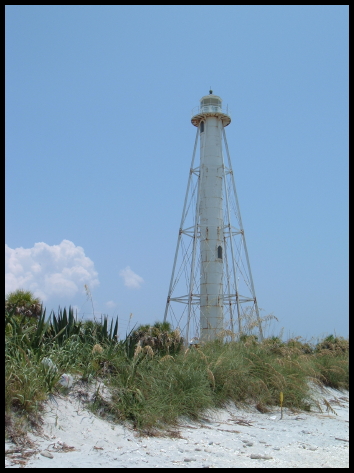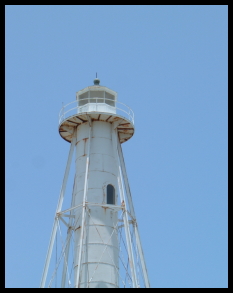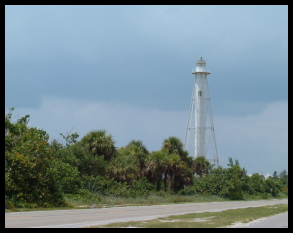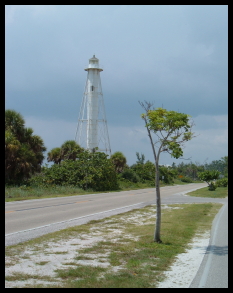After the discovery of the New World, the Spanish explorers set about searching for gold and silver during both the sixteenth & seventeenth centuries in what would later become the state of Florida. With no gold or silver mines to be found, it wasn’t until the nineteenth century that vast deposits of phosphate were discovered. Phosphate, commonly used in the making of fertilizers, began to be mined from the southern marshlands of the state. Once it was extracted from the mines, it was transported by railroad to Boca Grande, loaded on freighters and shipped abroad. To protect shipping traffic in Charlotte Harbor, a lighthouse was placed at the southern tip of Gasparilla Island at Boca Grande to aide navigation around the southern point of the island and into Charlotte Harbor.
The Gasparilla Island Light began its days as the rear range light for the Delaware Breakwater East light from 1885 until 1918, when it was shipped to Miami for storage. In 1927, the lighthouse was shipped by railroad to Gasparilla Island, where rebuilding was completed and it was relit in 1932.
Today, the rear range light continues to serve as an active aid to navigation, making use of an aero-marine optic. However, its ability to be distinguished from the lights of the developed shoreline is becoming more and more difficult with the continued development along the pristine beaches of the area. The lighthouse is structurally sound, but could use some work to remove rust and paint flakes. Since the light is still owned by the Coast Guard, the lighthouse is not currently open to the public.
To visit the Gasparilla Island Lighthouse, take I-75 to exit 32. Go south on 776 and continue south on 771 to Gasparila Island. Once on the island, continue traveling south and the lighthouse will be clearly visible on the right side of the road. There is a small public beach access which offers a great view of the lighthouse and the Gulf.







